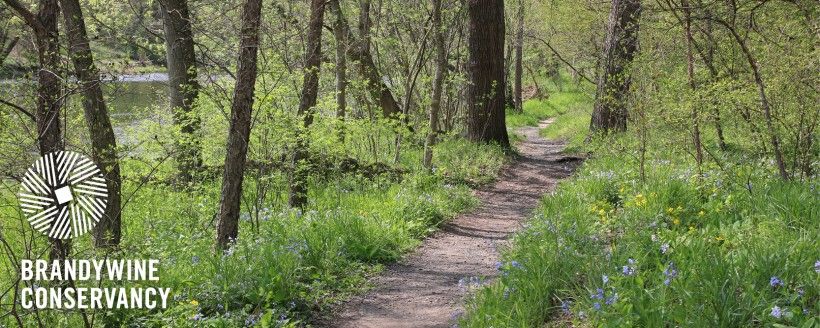
Directors' Report
Dear Fellow Conservationists,
We are thrilled to finally see the signs of spring—a time of renewal that is a theme firmly present in the organization’s mind as we continue to focus on rebuilding efforts post-Hurricane Ida.
Despite the devastating impact of the flood last fall, staff have been amazingly resilient in the face of challenges. As we work through the FEMA/PEMA process, the Conservancy still continues to dedicate itself to its important mission-related work with much success.
In this issue you will read about several partnerships: those with landowners who individually decide to commit their family land to conservation and agricultural preservation; those with municipalities and the Chester County Agricultural Lands Preservation Board to leverage funding to maximize preservation impact; and those within the water quality sphere to improve our drinking and surface water for health and recreation. It is these partnerships that allow us to successfully do our work everyday to protect the land and water of our collective region.
We completed a tremendous amount of conservation work in 2021. Some projects have been in process for over a decade—showing that many years of building trust with landowners and constituents resulted in a wave of conservation in our region. Our planning, land protection and stewardship work are all the more important as we see the significant role it plays in food security, water quality improvement, and now climate resiliency into the future.
As we do the technical work to protect our natural resources, the Brandywine is also boosting its educational programming and we have many exciting events this spring, including our Stewardship Series talk with Tom Wessels, our Pennsylvania Pollinator Photo Challenge, and several hikes at our public and member preserves, all outlined in our Calendar of Events in this issue. As the weather gets better, we hope that we can finally see our members and partners in person once again!
Sincerely,
Stephanie Armpriester & Grant DeCosta
Acting Co-Directors, Brandywine Conservancy
Looking Back at the Conservation Successes of 2021: Over 1,100 Acres Protected
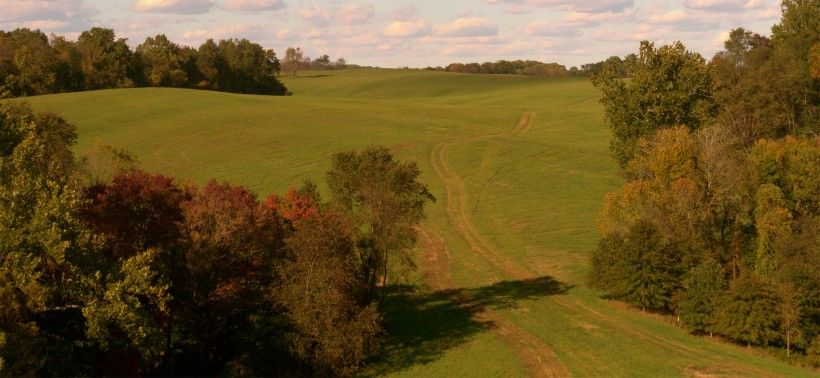
Last year was filled with its fair share of challenges—from navigating the ongoing COVID-19 pandemic to dealing with the historic flood from Hurricane Ida that heavily impacted both the Brandywine’s Chadds Ford campus and Laurels Preserve. Despite these unexpected difficulties, the Brandywine Conservancy still successfully continued with its land protection efforts throughout the year. As of December 31, 2021, the Brandywine ended the year completing 27 projects, protecting an additional 1,176 acres. These projects included new easements, fee acquisitions, amendments and facilitated transactions to further protect the natural resources in southeastern Pennsylvania and northern Delaware.
The new easements added in 2021 included:
- 17+/- acres preserved in Honey Brook Township, Chester County
- 79+/- acres preserved in East Fallowfield Township, Chester County
- 12+/- acres preserved in Birmingham Township, Chester County
- 65+/- acres preserved in Honey Brook Township, Chester County
- 75+/- acres preserved in West Bradford Township, Chester County
- 32+/- acres preserved in West Bradford Township, Chester County
- 40+/- acres preserved in Pennsbury Township, Chester County
- 58+/- acres preserved in London Grove Township, Chester County
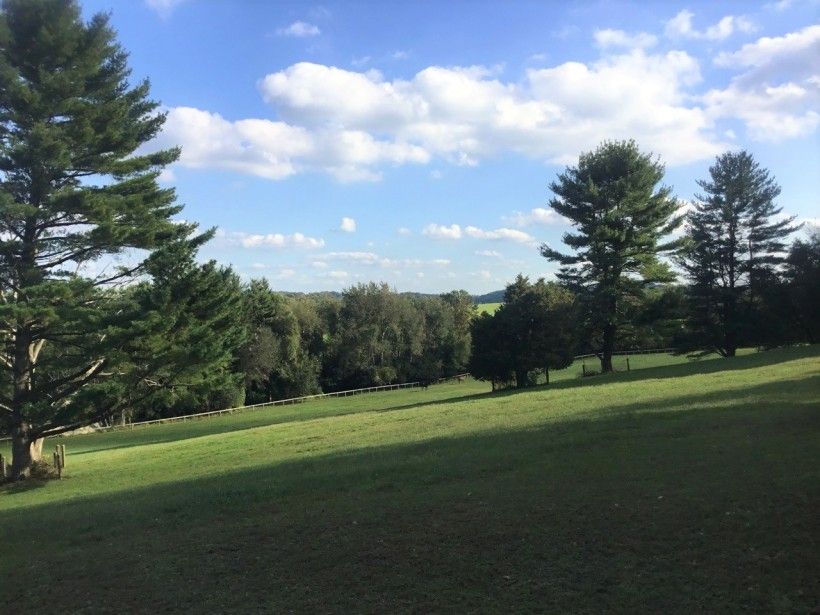
An additional 9,600 feet of streams are protected by these new easements, further safeguarding surface and drinking water for area residents. Efforts to protect land within the Brandywine Battlefield National Historic Landmark—a key focus area for the Conservancy for over 30 years—also continued throughout the year.
The Brandywine’s partnership between landowners, land trusts and townships—all committed to open space preservation—has been a very successful model in Chester County and beyond. In 2021, the Brandywine worked closely with West Bradford Township and Pennsbury Township to secure a total of three conservation easements that will further both townships’ open space goals.
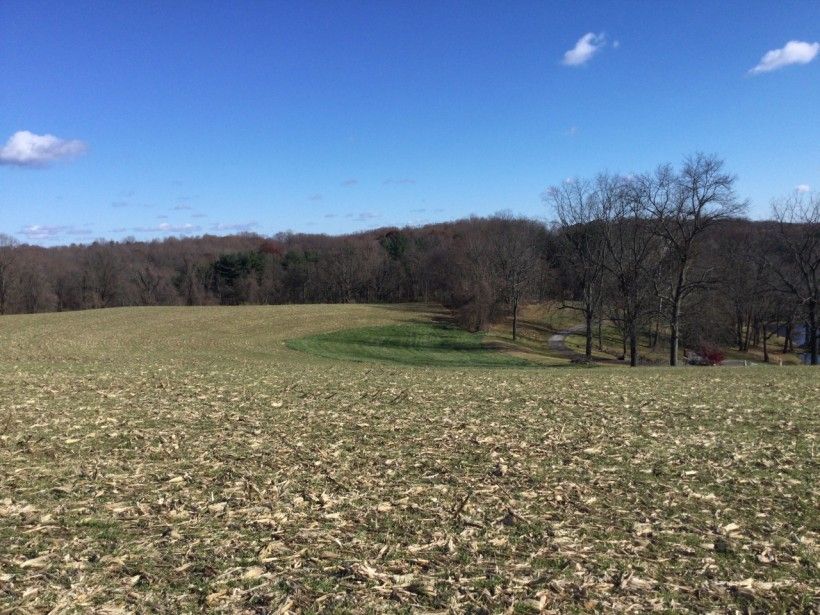
In a year where residents sought the great outdoors in record numbers, including both our public and member preserves, the Brandywine completed two acquisitions to expand its Laurels Preserve by 17%. These key parcels will provide increased member access and further protect the Preserve’s important bird and other animal species, including bobolinks, eastern meadowlarks and American bald eagles.
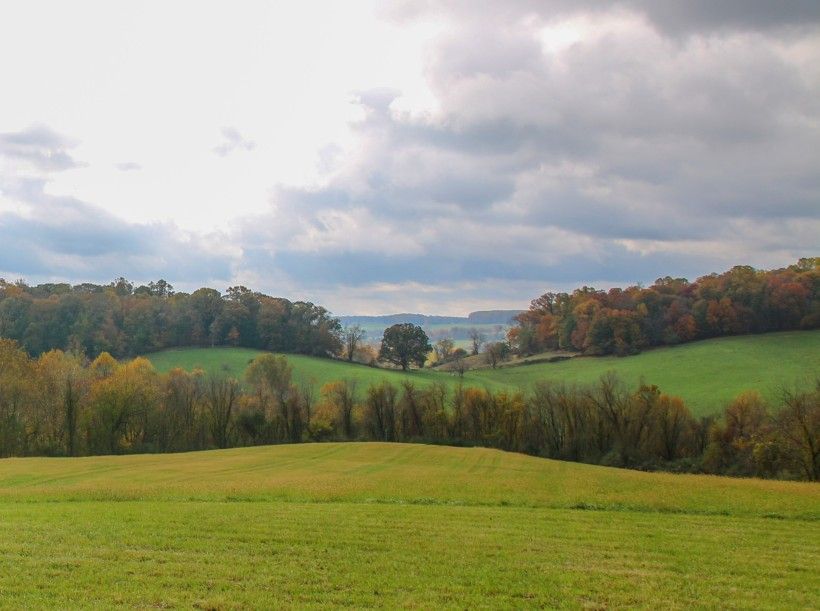
With 2021 in the rearview mirror, the Brandywine is thankful for all its partners, especially our landowners, who have committed themselves to protecting the land and water of the Brandywine Valley and beyond.
Q&A Spotlight with the White Clay Creek Wild & Scenic River Program Director

In the interview below, we hear from Shane Morgan, director of White Clay Creek National Wild & Scenic River Program. A partner of the Brandywine Conservancy, the Wild & Scenic River Program promotes and supports the preservation, protection, restoration and enhancement of natural and cultural resources of the White Clay Creek watershed in Pennsylvania and Delaware, in addition to encouraging a balance of recreational enjoyment.
A graduate of Pennsylvania State University and Drexel University, Shane holds a Bachelor of Science in environmental resources management and a Master of Science in biology. Previously Shane taught several undergraduate classes and was awarded the Drexel University Certificate of Excellence in College Teaching. She additionally worked as a Laboratory Instructor at Swarthmore College and served as a C.O.R.E. (caring for our resources and environment) leader at the Brandywine Valley Association—now known as the Brandywine Red Clay Alliance, which is a long-time partner of the Conservancy—supervising adolescents on various environmental restoration projects.

Tell us a little bit about the White Clay Creek watershed.
White Clay Creek flows through parts of Chester County, Pennsylvania and New Castle County, Delaware, and has a unique status of being a National Wild & Scenic River—the first to be protected on a watershed basis. Few rivers have this recognition. In fact, less than half of 1% of all U.S. rivers are included in the National Wild & Scenic Rivers System. In White Clay, we also have an unusual—yet successful—management set up, in that we are a Partnership River. This means that there is no federal ownership of land or direct federal management of the White Clay. Instead, we rely on local mechanisms and regulations to provide for the long-term protection of the river and its outstanding resource values. Fortunately, we do benefit from some federal oversight of water resource projects (projects in the bed and banks of the river) and receive federal funding to implement the goals set forth in the Watershed Management Plan.
What is your own connection to the watershed?
I became aware of the watershed when I was searching for a large tract of green space to go hiking. I was living in Kennett Square Borough at the time and had just returned from a three-month camping expedition exploring our National Parks. After some time had passed, I found myself craving that feeling of being immersed in nature. Mind you, this was before Google maps, so I purchased an old paper map and looked for the closest and largest protected green space. What I found was the White Clay Creek Preserve, a hidden gem only a few miles south of where I was living. I immediately set off to explore this place and instantaneously felt connected. So I set my sights on moving to Landenberg, PA and found the perfect home to raise my two children, just a mile outside of the preserve. The rest is history.
What do you think are the biggest threats to the watershed?
People are the biggest threat—myself included. I don’t think we generally like to accept this fact, but we make choices every second of every day that either directly or indirectly impact the environment. With people come increased development and added land use changes. These changes often aren’t in balance with nature. Less forest and more development (homes, roads, etc.) mean less places for water to infiltrate (more flooding), habitat degradation, and pollution to the very water that we depend on for drinking and recreating.
All of these threats are exacerbated by climate change, which in our region means more wet weather and extreme rain events. Not only do these changes negatively impact the environment, they also negatively impact our everyday lives. Increased flooding equates to school closings, longer commutes due to road and bridge closings, and sometimes direct damage to our homes, businesses, and safety. Humans have a hand in every single threat to this watershed, but we can also be part of the solution if we so choose. We can make the decision to live more equitably with nature. Conservation organizations already do a lot of the heavy lifting when it comes to the environment, but we can’t do it alone—we need buy in and voluntary action from the community.
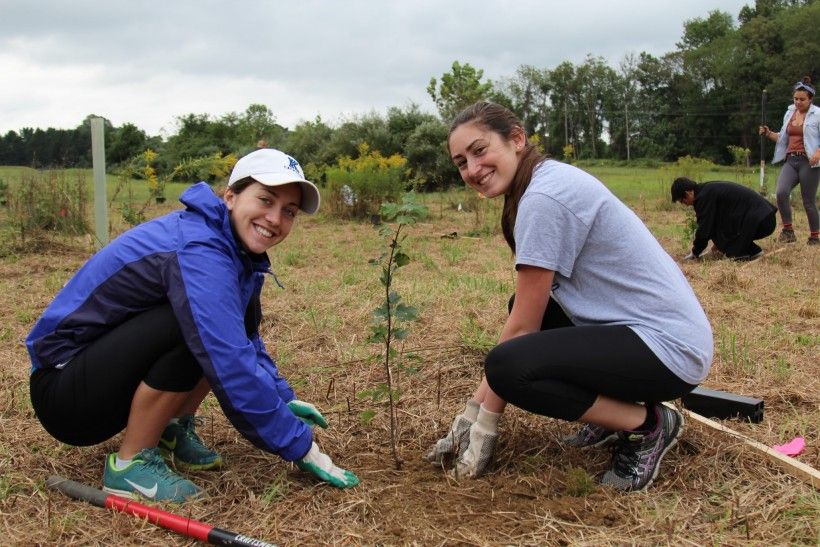
What is the Wild & Scenic Program doing to mitigate these impacts and what is your role?
A lot of what we do is education based, both through community and municipal outreach. For instance, we have a program that reaches out directly to watershed residents, on a one-to-one basis, called “Catch the Rain.” This is a voluntary incentive program for property owners in the White Clay Creek watershed. Participation involves implementing projects, such as planting trees or installing a rain garden to improve habitat and reduce the impacts of runoff from rain events. These small projects capture storm water at its source and are relatively inexpensive, and combined have a positive impact on watershed health. This is perhaps my favorite program because it allows me to build relationships and trust with private landowners, some of whom go on to become dedicated volunteers and stewards of our watershed. It also affords me the opportunity to see parts of the watershed that would otherwise be off-limits—88% of our watershed is privately owned land.
In addition to outreach activities, we support restoration and land preservation and we have a fairly robust water-quality monitoring program. We rarely work alone, and often leverage our resources with those of other conservation organizations (Brandywine Conservancy included), as well as local municipalities to accomplish our goals. My role, as the only paid staff managing the Program, is primarily to bring people together, encourage cooperation, and identify opportunities to make watershed improvements.
How can regular citizens make a difference or get involved?
I think one of the easiest things we can do is take ownership of what we do on our properties or in our homes. For instance, if you have a yard, why not convert some of it to a native plant garden? Or direct one of your downspouts to a rain garden, which is simply another term for a garden that holds water for a short period of time. There is so much information available to us at our fingertips if we just seek it out. If you don’t own any property, think more about what you put down your drain and make better choices that way. You can also attend municipal meetings and speak up about natural resource protection, especially when they are at risk from a new development project, or just start a conversation—share what you are learning with your neighbors, your children’s schools, your employers. The more we talk to each other and build trust, the more we can accomplish together.
Brandywine Conservancy’s Farmland Preservation Program: Working Together to Save Family Farms
Since 1967, the Brandywine Conservancy’s land preservation work has focused on protecting the lands in the Brandywine Valley & important complementary lands in the region. To date the Brandywine has eased and/or facilitated the preservation of more than 69,200 acres. The facilitation component has primarily been through our farmland preservation work assisting the Chester County Farmland Preservation program. Pennsylvania agriculture is not only an important cultural and historical component, but it is also a major contributor to the region’s economy. Agriculture in the area is diverse, containing equestrian operations, crop farms, dairy farms, nurseries, vineyards and specialty farms. Open farmland has many benefits, beyond providing us with food on our tables. It’s also important for the recharge of ground water, provides critical habitat for local wildlife populations, and also promotes and protects biodiversity. This region is blessed with fertile soils, a climate receptive to diverse crops, and an annual rainfall that minimizes the need for irrigation. All together it is no wonder why so many family farms are established here.
Farmland Preservation—A Benefit for All
The public benefits of preserved farmland include protecting prime farmland soils and soils of statewide importance; creating a stable agricultural land base to ensure critical support industries remain in the area; guaranteeing our agricultural heritage and landscape remain a part of our region; while also giving us a local food security net. An important byproduct of farmland preservation is that it also ensures that the property will continue to absorb rainfall and act as a buffer to floodwaters, adding a layer of protection to structures downstream from being affected by the devastation of fast-moving water.
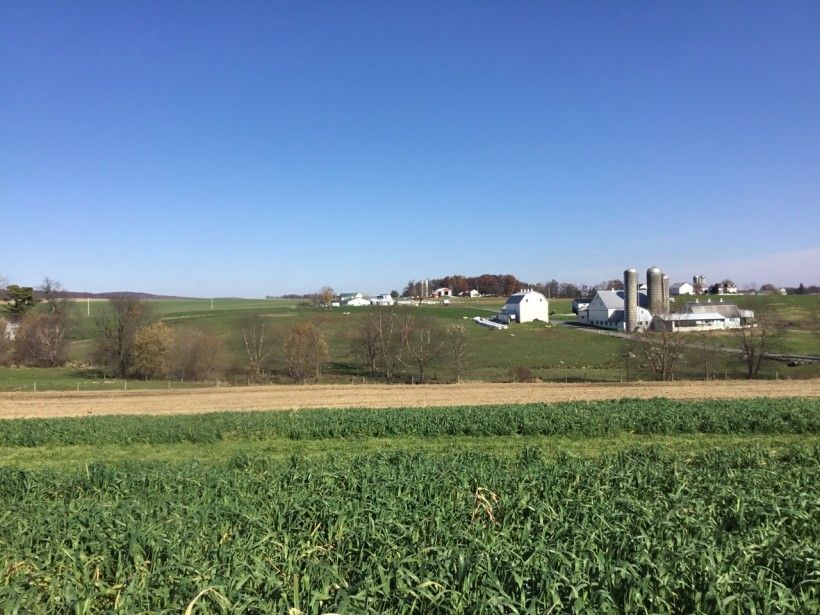
History of the Brandywine’s Farmland Preservation Program
In the early 1990s, in recognition of the importance of agriculture, the Conservancy added the Farmland Preservation Program to its services. For 35 years, the Conservancy’s Farmland Preservation Program has helped farmers explore preservation opportunities while helping the landowner to implement Best Management Practices (BMPs) to mitigate farming’s impacts on water quality. The Conservancy helps by facilitating and partnering on projects with a multitude of agencies. These include Chester County, the state of Pennsylvania, USDA, local municipalities, as well as other conservation organizations. The Conservancy’s role began to materialize in 1989, when the Chester County Agricultural Land Preservation Board was formed. The Board administers the Commonwealth Agricultural Conservation Easement Purchase Program and also developed the Chester County Challenge Grant Program to purchase easements partnering with municipalities and nonprofit entities on specific projects. These programs offer eligible farmers an appraised value not to develop, giving the farmers an option instead of just selling land. As part of the arrangement, implementation of their conservation plans is mandated. This synergy helps the farmers who preserve their land be better land managers and stewards.
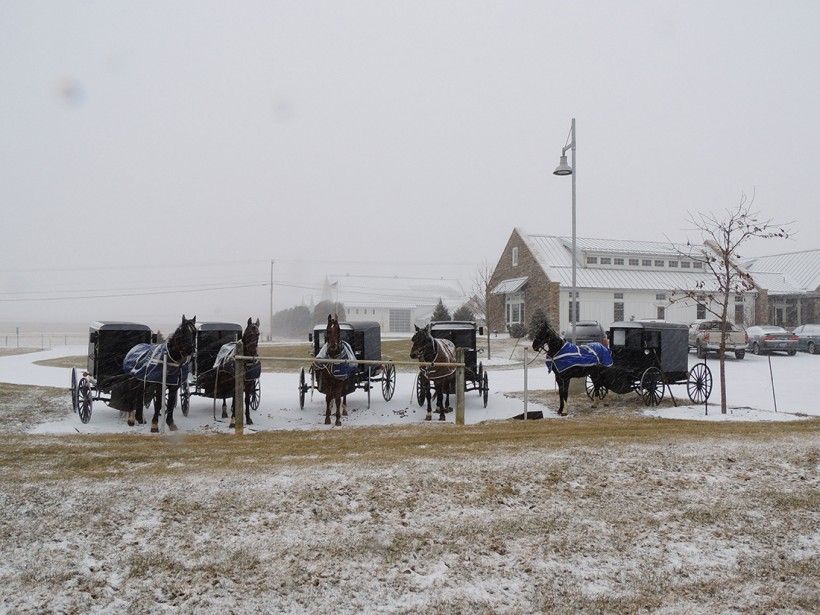
Conservancy’s Role in Facilitating Farmland Preservation
The Conservancy’s primary role in the process is to meet, build relationships and assist farmers, including Plain Sect (Amish) farmers, in farmland preservation by facilitating workshops and meetings with the goal of protecting and conserving the land, water, natural and cultural resources of the Brandywine-Christina watershed and other key landscapes. One of the most popular events is a breakfast hosted by Honey Brook Township focusing on the farming community, but open to the public. Participants demonstrate how preserving farms and utilizing conservation plans have made their farms more productive, allowing them to remain vital and viable to be transferred to the next generation. Through these project partnerships, the Conservancy has been instrumental in protecting and preserving the agricultural landscape of southeastern Pennsylvania by:
- facilitating, co-holding, or acting as beneficiary to agricultural conservation easements protecting farms;
- engaging with thousands of landowners by cultivating, assisting and guiding them through the process of donating or selling easements; and
- contributing to dozens of workshops, presentations, technical advisory committees and educational programs.
Preservation Process with the Chester County Agricultural Lands Preservation Board
The Conservancy individually assists farmers with understanding and applying to the Chester County Farmland Preservation Program. These applications are accepted on a yearly basis through the first Friday in August. The applications are then evaluated and ranked using a numerical ranking system. Landowners are contacted in ranking order to begin the easement process. When completed, a Deed of Agricultural Conservation Easement is recorded. This easement document requires the land to remain in agricultural use in perpetuity, and to use a conservation plan as a guidance tool that protects the soil from erosion, as well as groundwater and local surface waters from contamination. One additional residence and agricultural structures are also permitted. Building locations are subject to County approval and cannot affect the agricultural viability of the property. By keeping soils healthy through conservation practices, the effects of greenhouse gas emissions and climate change can be offset.
Impact of Leveraging Partnerships
Working in tandem with Chester County on projects, the Conservancy has combined land preservation and farmer assistance into a transformative program, protecting thousands of acres of land and hundreds of farms, while providing farmers with financial and technical assistance on planning and implementing farm conservation practices. It is this work that has contributed to the existing agricultural landscape of southeastern Pennsylvania. Staff are now deeply entwined in the agricultural community cultivating personal relationships that continue to drive the conservation effort forward.
And, as always, at the forefront of every acre preserved are the individuals and families who voluntarily choose to protect their family farms forever. We are grateful to the landowners who make a long-term commitment to the future of agriculture in our region.
Interested in farmland preservation?
Contact John Goodall, Brandywine’s Senior Outreach Associate, at [email protected], or Geoff Shellington, Chester County’s Agricultural Programs Coordinator, at [email protected].
Invasive Species Spotlight
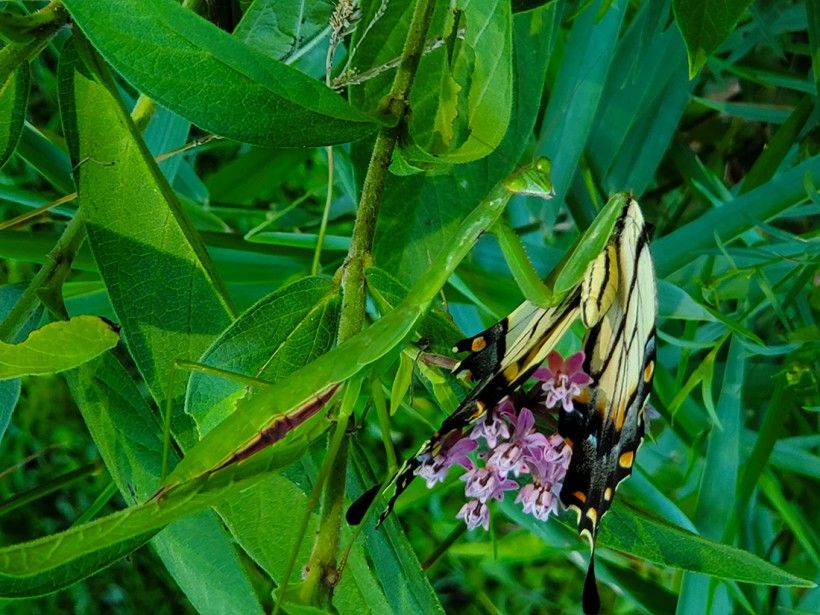
Not all praying mantid species are created equal! The mid-Atlantic region has only one native mantid species, the Carolina praying mantis. Unfortunately they are in decline due to competition with invasive mantid species, which indiscriminately consume many beneficial pollinators, such as honeybees and native bees and butterflies—and also feed on the Carolina mantis. Winter and early spring are a great time of year to search for and destroy the egg masses of these invasive praying mantis species, called oothecae. On our latest blog, learn how to distinguish between the native Carolina mantis oothecae and the invasive mantid oothecae.
Click here to learn more.
New Faces of the Conservancy
Some new faces have joined our team! Meet two of the Brandywine’s newest staff members: Olivia “Liv” Falcone and Lisa Timbers.

Olivia “Liv” Falcone is a new Assistant Planner in the Brandywine's Municipal Assistance Program. Liv has a Bachelor of Arts degree in geography and art history, and a master’s degree in community development and planning—both from Clark University in Massachusetts. While Liv is new as a professional planner, she has previously completed a planning internship, and she has an extensive educational background including experiential coursework. Liv also previously interned in the education department at the Brandywine River Museum of Art.
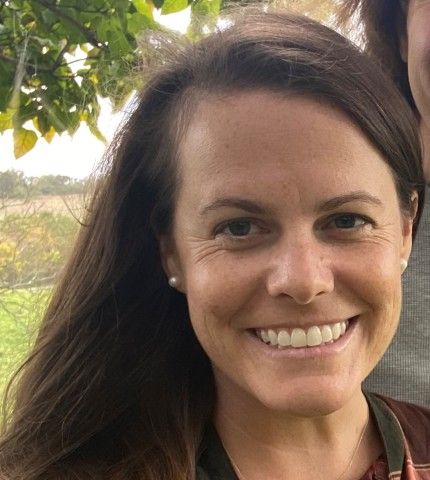
Lisa Timbers is the Brandywine's new Assistant Planner for Community Services. Lisa has a master’s degree in environmental science from Villanova University and a bachelor’s degree in psychology with a minor in studio art from Allegheny College. Lisa was most recently employed as a hydrologic technician at the United States Geological Survey (USGS) and previously held roles with the State of Delaware Division of Parks and Recreation and the Division of Public Health. Prior experiences include positions in financial services, teaching and event planning. During her time with USGS, Lisa’s territory included monitoring the gauge at the Brandywine River Museum of Art and other sites throughout southeastern PA.
Uncovering Secrets of the Forest
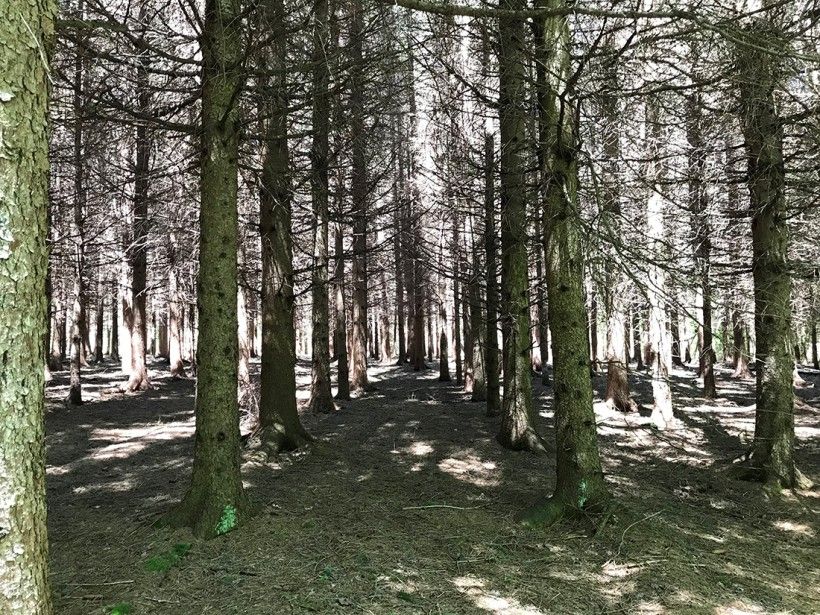
Have you ever wondered what kinds of stories a tree could tell? Trees can provide all sorts of information simply through visual features. If you know what to look for, studying the visual features of a tree can reveal hundred-year-old clues about the history of a landscape. Tom Wessels, terrestrial ecologist and author of the book, “Forest Forensics: A Field Guide to Reading the Forested Landscape,” has dedicated a large part of his career teaching people how to give historical and ecological context to the most subtle features of a tree.
Click here to read more about Wessels' work and some of the clues forests provide us.
You can also join us on April 13 for a virtual seminar featuring Wessels, hosted by the Brandywine. During the program, learn how to identify clues that will help you decipher the secrets of your local woods. Wessels will also be interpreting a series of photos of forest landscapes from the Brandywine Valley, which attendees are encouraged to submit in advance of the program.
Pennsylvania Pollinator Photo Challenge
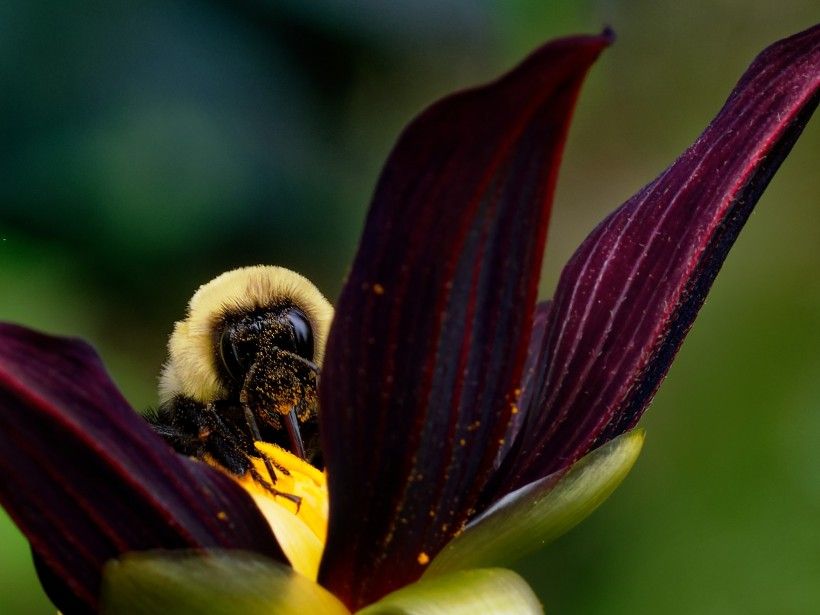
Due to the success of the inaugural Pennsylvania Pollinator Photo Challenge last summer, we're excited to share that another contest will be coming soon. Hosted by the Brandywine’s Penguin Court Preserve and the Westmoreland Pollinator Partners, the second annual photo contest will once again encourage people to observe and photograph pollinators found in Pennsylvania.
This contest will kick off on May 22, the International Day of Biodiversity, and will conclude August 5, 2022. Winners and honorable mentions in both the youth and adult categories will be revealed at the "Monarchs, Milkweed and More" event in Ligonier, PA, tentatively scheduled for Sunday, August 21. Photo contest details will be shared soon at www.brandywine.org/photo-contest, while more information about the "Monarchs, Milkweed and More" event will be shared later this summer on the Brandywine’s event website.